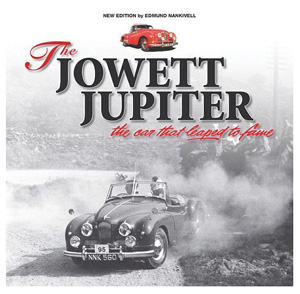 The Jowett Jupiter – The car that leaped to fame – New edition of the definitive Jowett Jupiter book!
The Jowett Jupiter – The car that leaped to fame – New edition of the definitive Jowett Jupiter book!
By Edmund Nankivell
25x25cm • 224 pages • 226 pictures
ISBN: 978-1-845849-12-2
£ 50.00 (for eBooks this varies and delivery is free)
Veloce Publishing, 2015
Review by Pete Vack
Yikes, what is a review of a British car book doing in the Italian and French pages of VeloceToday?
Well, that’s a good question. The Jowett Jupiter is a very interesting, unusual, well-engineered sports car that for a few brief years, surprised the lot at both rallies and races, particularly at Le Mans. The Jupiter was the result of a series fortuitous events which occurred right after WWII.
First was that the Jupiter was based on another unusual British car made by the same company, the Javelin. In 1946, talented Brit designer Gerald Palmer had created a very advanced sedan with a unit body, torsion bar suspension, and a flat four 1492 cc engine that was proving both fast and a good seller. Then in 1949 along came Professor Robert Eberan von Eberhorst, straight from Germany looking for post war work in Britain. He found it with ERA and later Aston Martin.
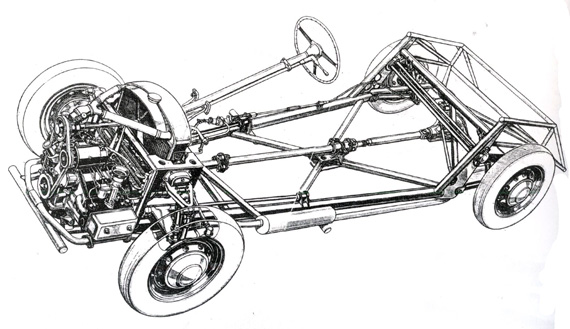
Why we like the Jupiter. Tube frame, torsion bar suspension, rack and pinion steering, well located rear axle with a Panhard rod. We even like the column shift!
Jowett’s managers asked ERA to design a modern chassis for a new Jowett sports car, so the Prof gets out his chalk and sketches one out on the floor. He later recalled, “ The tube is only element that gives, a the same time, the best torsional and bending rigidity, and you have to have both….I designed the Jupiter chassis frame by drawing it out in chalk on the shop floor—where the mice played! After working at Auto Union and even Cisitalia, that was a crazy way to design a car.”
Eberhorst and the team at Jowett added the flat four upfront (yet with standard rear wheel drive), used the wishbone front suspension, rack and pinion steering and torsion bar springing from the Javelin, added a smart aluminum convertible body, and suddenly in front of them was a thoroughly modern small displacement sports car that would find success in a huge number of races and rallies from 1951 to 1955.
The looks, while awkward, were patterned after the Pinin Farina bodied Alfa 6C2500s of the mid-forties, and after a while grew on one despite the tiny gate-like doors.

HKU 56 was enthusiastically tested by John Bolster for Autosport of January 1952. (© The Klemantaski Collection)
Although it was competing successfully against the 1100 and 1300cc Porsches and even large MGs and HRGs, it did extremely well until Porsche started to get serious about racing. At the same, by 1954, Jowett was in financial trouble while Porsche went from rags to riches. The car’s biggest stumbling block proved to be the reliable but underpowered pushrod operated water cooled flat four which the factory could not seem to reliably increase the 60.5 hp, although independent tuners often got as much as 90 hp from Palmer’s boxer. Not as fast as most in their class, the Jupiter out handled most of the competition, due to the Eberhorst frame and suspension.
Even the streamlined Javelins were successful in their class, and one ended up in the hands of Canadian engineer Bill Sadler (see story), whose initial Jowett special went from a flat four to a Chevy V8. One wonders today why he didn’t seek out a used Jupiter, as the key to the cars success was really the Eberhorst tube frame.

Cal Marks (left) and Hunter Hackney (right) and trophies achieved at California SCCA events. (Road and Track)
By a fairly accurate count, the Jupiter clan has agreed that 900 or so Jowett Jupiters were built by the Jowett company, which had been producing serviceable vehicles in Bradford, Yorkshire since 1904 and in the interwar years offered a number of family sedans. Edmund Nankivell tells the story of the Jupiter focusing only on the sports car and he speaks to the knowledgeable British Jowett fan. This is one case where editing for focus was a bit frustrating; there is virtually no mention of the Javelin and for neophytes like I, it would have been nice to have included at least a chapter on this famous passenger car. At least 23,307 Javelins were made from 1946 to 1953-4. Another slight oversight is that little mention is made of the Jupiter Bradford van and light truck, with a flat twin engine. Over 38,000 were built from 1946 to 1954 and the chassis provided the basis for the last Jowett Jupiter, the R4.

C H Wood photographed the finished specially built R1 Jupiter before the 1951 Le Mans. It was so light that the passenger seat was not load-bearing as the regs did not say it should be. Three R1s were built.
To offset that, it is a very thorough book which answers many questions about the car. Nankivell brings us through the design and construction, then off to Le Mans and documents the cars’ remarkable three in a row class wins. The Jupiter won many class victories in International rallying as well as two outright victories, and they are detailed in the next chapter. Adding to that are further chapters about the Jupiter racing successes around the world, other rally competitions, and how well the Jupiter fairs today in modern vintage racing. Photos are excellent and numerous, ( but for some reason there are very few detail photos of the Jupiter’s interior, dashboard, and seats.)

GKY 106 as prepared for Motor Sport Bolster for Autosport of January 1952. (© The Klemantaski Collection). It would soon be used in the 1951 Monte Carlo Rally. (Jowett Cars Ltd)
A full chapter discusses the Jowett Jupiter R4, of which only three were made. This time the design reflected the Ferrari 166 Touring barchetta, the body was fiberglass but the lightweight and strong Eberhorst tube frame was replaced by a heavy steel channel frame with elliptical springs locating the live rear end taken right from the Bradford van. It was cute, it was different, but somehow the whole idea of the original Jupiter was lost in the translation.
As we have seen in our feature “Farina’s Jupiter Symphony” quite a few coachbuilders had their way with the Eberhorst chassis. Coachbuilders included Abbott, Beutler, Ghia Aigle, Farina, Radford and Worblaufen. The Farina may have been the prettiest of the lot. Nankivell does a pretty good job on the special coachbuilt chapter, but lacks a degree of organization and the photography could be better.
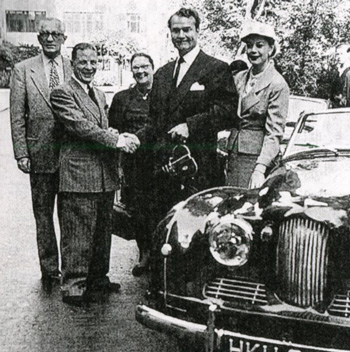 That’s Red alright, photographed in August of 1951 on a trip to the U.K.
That’s Red alright, photographed in August of 1951 on a trip to the U.K.
But there is a lot in this 218 page Jupiter Opus, for Nankivell tops the book with the Jupiter Register, listing every known chassis by serial number, owners, notes, locations, and history. Did you know that American Film star an comic Red Skelton bought FOUR Jupiters, one for himself and three for his entourage?
This is fine book written by an expert on a very worthy automobile.
Chapters:
Acknowledgements
Prologue
Chapter 1 – The Jowett Jupiter
Chapter 2 – The Jupiter Experiment
The skin and beneath
Summary of road tests
Comparisons with other cars of the period
Good Works and private race and rally results 1950–1953
Jowett Jupiter records
Chapter 3 – The Leap to Fame – Le Mans and the R1 Jupiters
Chapter 4 – The Major Rallies 1949 to 1953
Chapter 5 – Races and Speed Events 1950 to 1953
Chapter 6 – Other Rallies and Events 1950 to 1966
Chapter 7 – Jupiters Yesterday and Today
25,000 miles in a Jowett Jupiter
The Jupiter in Concours d’Elégance
The Jupiter in Historic racing
Current use
Chapter 8 – The History of the R4 Jupiters
Chapter 9 – Special-bodied Jupiters: the Coachbuilders
Chapter 10 – The Jupiter Register
Epilogue – Sir Hugh Bell remembers
Appendix – A Jupiter Chronology
Index
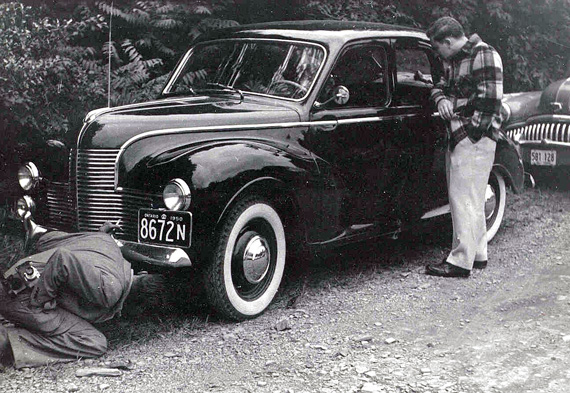

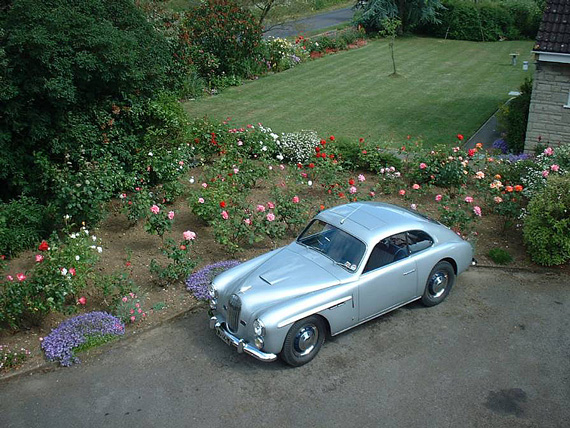
i used to see a jupiter or two on the road northbound to the monterey historics longish ago. driving to the races, just like God intended! where are they now?
The boys in Bradford are just as keen now as then, if a little older.
the Jupiter deserves to be better known and more widely appreciated, and this book may help.
But not as much as this article, were Veloce Today to be read by as many as should.
A friend, Jack Martin, and I bought a half-finished Jowett Jupiter “special”, with a fiberglass Mistral body in 1960 in Los Angeles, completed it to go racing. It looked good, sounded good, and ran well until we entered it at Del Mar where the front suspension broke in practice. We tested it earlier at Riverside during a drag meet, running it through the traps on the long straight, then pushing it hard through the corners (the course ran in reverse) to test handling on the way back to the start of the drags. Being the only under 1500 sports car, we took home a trophy. The car never ran after Del Mar.
I grew up in England, and our family’s first car was a late thirties? Jowett saloon, with the flat twin engine. Nice little car as I recall as a child. Our next car was a used Jowett Javelin! Again, a really nice car. I remember my first highway drive on Dartmoor late at night when I was 14. Alas, the car broke its crankshaft and we considered it too expensive to fix
This book is not “fine” at all. To create a good book, you need more than just some interesting facts or the ability to write a readable text. You need a publisher that works to 2016 standards, which is not the case for Veloce Publishing. The typography in this book is (like in many other Veloce books) terrible. So is the quality of the pictures, because in many cases their resolution would only be sufficient to illustrate a miniature stamp. And did anybody notice that it lacks technical pictures of i.e. the engine, or views of the cockpit? A reader paying 50 (!!) Pounds for “The only book to cover the full Jupiter history” (cit. back cover) certainly deserves better than that!